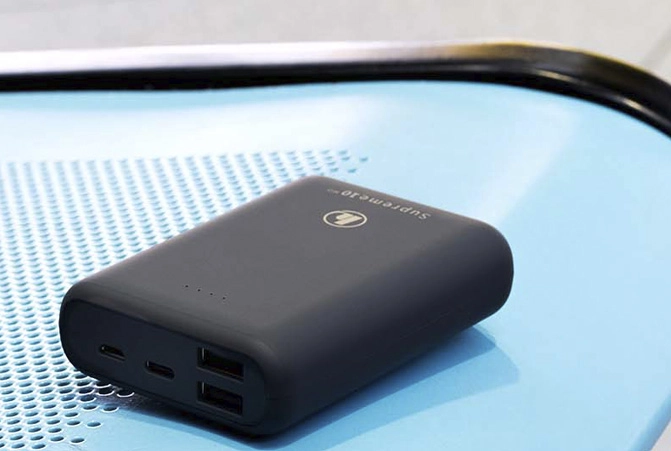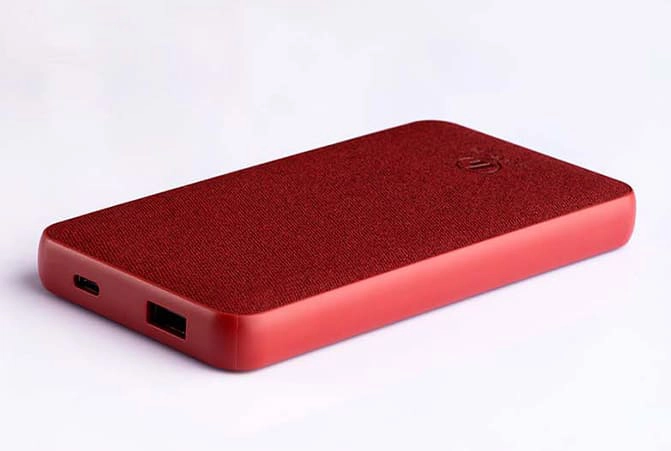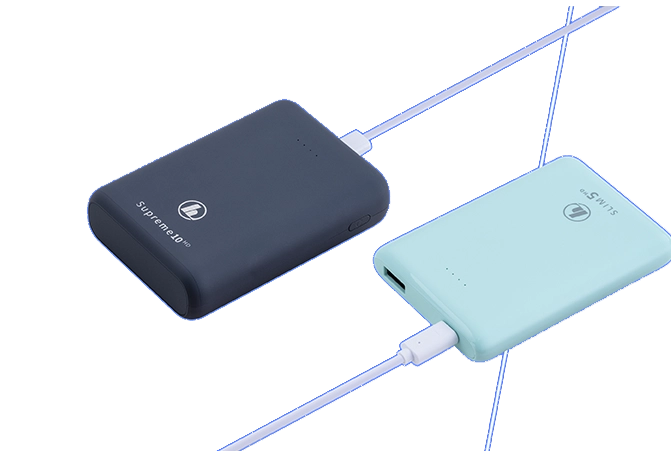Charge a power bank
Even the rechargeable battery of a power bank is drained eventually. But how should you best charge up a power bank? Find out here what you need to bear in mind.
8 min read | Nov 17, 2021
At a glance: Charge a power bank
- The rechargeable battery of a power bank is charged quickest via a power supply unit at a plug socket
- The higher the storage capacity of a power bank, the longer it takes to charge
- If a power bank has an LED capacity indicator, the charging status can be seen straight away
- Battery-saving charging extends the lifespan of the power bank
- Inductive power banks need to be charged themselves via chargers and charging cables
- Most solar power banks only charge very slowly due to the relatively small surface are of their solar panel
-
How long does a power bank take to charge?
How long a power bank needs to charge depends on how large its capacity is, how much charging current it can accept and how much power the power supply unit provides. A power bank with a capacity of 2000 mAh charges more quickly with a 10-watt charger than a power bank with 20000 mAh.
-
How long does a solar power bank take to charge?
How long a solar power bank needs to charge up depends on the size of the solar panel and the amount of sunlight. As sunlight is not reliably available and the solar panel surface of most power banks is relatively small, it can even take several days before a usable charging level is reached.
-
Should you ideally charge up a power bank with a power supply unit?
Yes, you should ideally charge a power bank with a mobile phone power supply unit as that is the fastest option. Make sure that the charger offers sufficient power to charge the power bank as quickly as possible.
-
Which charger is suitable for a power bank?
The charger that you use to charge your mobile phone or tablet is usually suitable for a power bank. If you want to charge your power bank as quickly as possible, use a power supply unit that supports the possible charging speed of the power bank (see ampere information).
How do you charge a power bank?
You charge your power bank with a power supply unit at the plug socket. To do this, you can use the power supply unit that you also use to charge your mobile phone or tablet. To charge, connect the power bank and charger with the right USB charging cable (depending on the power bank charging input, this is a USB-C or Micro-USB cable) and plug the charger into the plug socket. Make sure that you do not accidentally damage the charging input port with an incorrect plug.
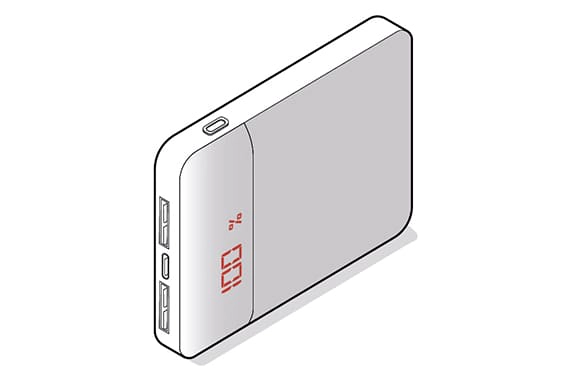
For most power banks, you can see when the rechargeable battery of the power bank is charged up via an LED indicator on the housing. If you then disconnect the power bank from the power supply, it is ready for use as mobile energy storage your mobile phone, tablet and the like.
Good to know:You cannot overcharge a power bank as its charging electronics ensure that the power bank battery takes in no further power once it is fully charged. Hama power banks such as the power pack “Supreme 5HD” have overcharge protection, which automatically ends the charging process once the rechargeable battery is full. Nevertheless, electronic devices should be disconnected from the power supply unit once fully charged.
How often does a power bank need to be charged?
How often a power bank needs to be charged depends on its capacity and the capacity of the devices that you want to charge. A power bank with 5000 mAh is just about sufficient for two mobile phone charges, but is empty after one tablet charge and must itself be connected to a charger again.
When is a power bank charged up?
When your power bank is charged up can be seen on most power banks via an LED indicator. Either the light goes out or it lights up in another colour when the rechargeable battery is full. Some power banks offer a little more convenience with a real charging status indicator. Most have four LED lights on the housing to indicate whether the power bank is charged 25, 50, 75 or 100%. This offers the advantage that you can track the charging process and possibly decide that the charge is enough when three of the LEDs are lit. It also gives you better control of when the power bank needs to be charged.
How to charge a power bank correctly
Like any rechargeable battery, the battery in a power bank also has a longer lifespan if you follow the recommendations for the gentle charging of rechargeable batteries, which we discuss in our article The correct way to charge your phone . The most important tips:
- The rechargeable battery of a power bank is designed for a limited number of charging cycles. If these are exhausted, the performance of the integrated battery cells decreases noticeably. This is why you should only charge the power bank when necessary.
- The rechargeable battery loses power more quickly if it is always charged to 100% and completely drained. A power bank is charged more gently if the rechargeable battery is connected to the power supply unit at a charge of approx. 20% and the charging process is ended at 75% wherever possible. For a power bank with a charging level indicator, that corresponds to one or three lit LEDs.
- If the power bank is not needed for a prolonged period of time, the charging level should be kept between 50% and 60%. Never store it empty!
Fast charging of a power bank: The possibilities
How long a power bank takes to charge up initially depends on the capacity of its rechargeable battery: A power bank with 2000 mAh charges more quickly than one with 20,000 mAh. The charging time of your power bank is also dependent on how much charging current it can hold and how much power the charger being used delivers.
So, if you want to charge your power bank quickly or, even better, charge it at the fastest possible speed, it’s worth looking at the ampere information for the power bank charging input. If the power bank can accept a charging current of 2 amps, it charges more slowly than is actually possible if a 1-amp charger is used. If you want to shorten the charging time of your power bank, you need a power supply unit that can provide the necessary charging current.
A power bank with a USB-C charging input, such as the Hama Power Pack “PD10-HD”, 10000 mAh, can be charged much more quickly with an optimised charger than power banks that can only be supplied with power via a Micro-USB connector.
Power bank: Inductive charging
A power bank for inductive charging can be used for the wireless charging of mobile devices, just like an induction charger. Although it is possible to wirelessly charge the rechargeable battery of a power bank with wireless power banks, it takes a very long time and also poses an increased safety risk due to heating during charging. This is why Hama has not integrated this function. Charge your power bank quickly and safely using a suitable USB charging cable with a compatible power supply unit at the plug socket.
The advantage of an induction power bank over wired power banks is that you don’t need a cable to charge your mobile phone with the power bank when you’re on the move. For some power banks, such as the Hama wireless power pack “MagPower 5” , which is compatible with the MagSafe technology from Apple, it is possible to charge and drain the power bank simultaneously. This means you can place a mobile device on the power bank for charging while this is also charged via cable at the plug socket. We offer you more information on inductive charging in our guide Charge a phone without a cable.
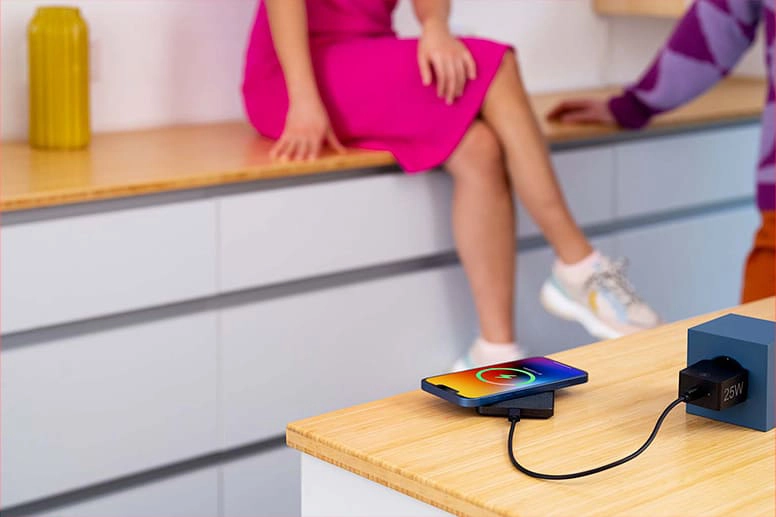
Charge a power bank with a solar panel
Charging a power bank with solar panels initially sounds good and environment friendly. However, at our latitude, it can take days before the power bank is charged through sunlight alone. A power bank would only be charged semi-reliably if it has a solar panel larger than A4 size.
Even though there are now power banks with solar panels that fold out, this type of charging does not really seem compatible with everyday life. It’s more sensible to only use the solar panel of the power bank additionally when there is enough sunlight – and to otherwise charge the power bank as usual via the plug socket.


